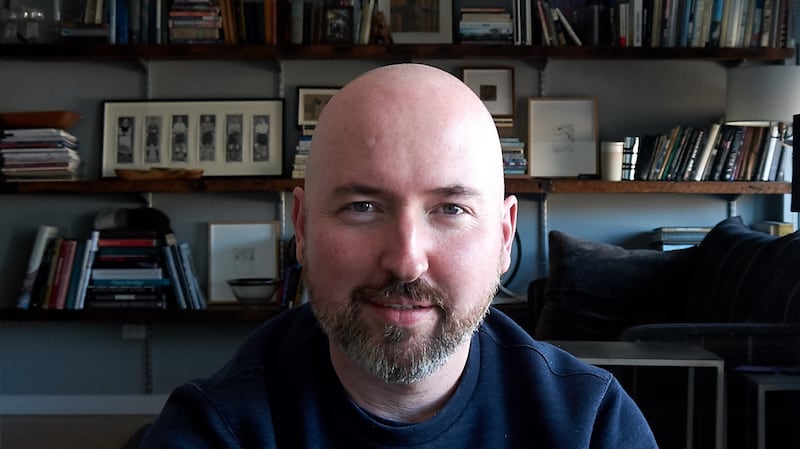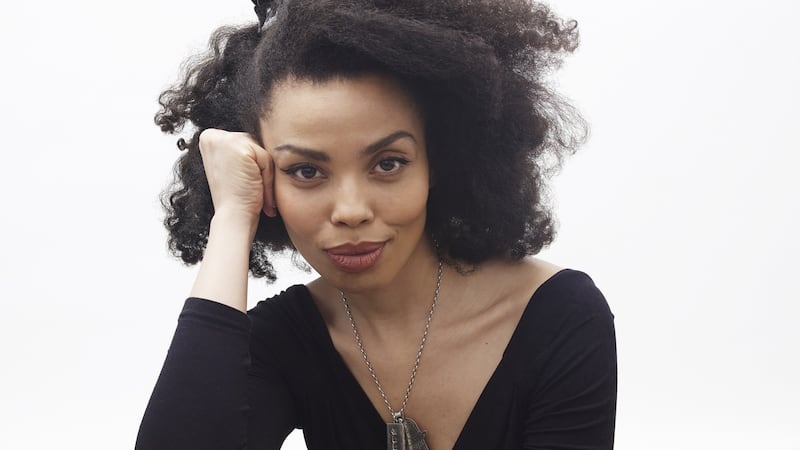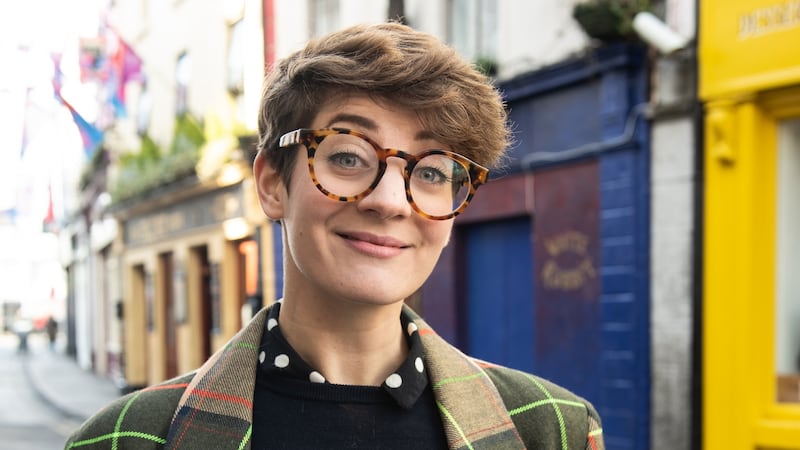This week last year a gathering in Galway city marked Cúirt’s programme launch. There was excitement and chatter and mingling – though no handshakes as I recall; we knew that much even then – and a celebratory, social atmosphere for new director Sasha de Buyl’s first lineup of Galway’s long-established literature festival. That evening is frozen in a kind of surreal pre-all-this dreamplace. Three days later Leo Varadkar’s speech closed Ireland in the face of pandemic.
The morning after optimism died, de Buyl was on the phone to Atlantic Audio, which usually handles sound for the festival, asking: livestreaming of the festival – is it even feasible? It was.
The other big plus was speedy news from the Arts Council that arts organisations’ grants were safe, even if events couldn’t go ahead, which took some pressure off. It was “a huge sigh of relief. It meant I knew at least on a base level that we had budget to support artists and put something together, and to look at options, sketch out what we could do in different scenarios”.

So, with impressive resilience, the team turned on its heel and created an online festival in what seems a blink. How did they manage that? “I was new into the job. I had a lot of energy,” she laughs. “Plus, I was so excited to get the programme out into the world.”
So last April, at the height of that scary initial lockdown period, Cúirt presented a live, streamed selection of what it had originally planned, with 11 events over three days.
“It was,” she says now, with understatement, “not the first Cúirt I was expecting. Cúirt is really known for being rooted in Galway. It’s the main character of the festival, it’s why people come, it’s the reason I moved back to Ireland.”
It was, however, as far as she can figure out, the first such festival to switch rapidly from live to online, presenting work on their original dates, right after the pandemic hit.
“It felt surreal, but incredibly positive. We were testing new ground, seeing what audiences made of it. And it was really wonderful, how it reached people. We created a community of people talking to each other online.”
They got great feedback, including more than 700 survey responses, with “people telling us how much they loved it, how they felt less alone, felt more connected than they had in weeks, that it was the closest they had to a hug since lockdown started. It really spoke to the power of books and reading to bring people together and get them through hard times”.

Some 3,800 watched in real time over the three days; including playback on YouTube, Cúirt reached 15,000 people in total.
So here we are again, one pandemic year down and, much learning in hand from 2020, de Buyl is unveiling Cúirt 2021 and promising to continue the conversation from last year with its new online festival community.
Visual variety
“Luckily, literary events translate well to a screen environment,” says de Buyl, though she is conscious at this stage that “we’re all staring at our screens too much”. She’s planning this year to create some visual variety and use different spaces.
At the moment the plan is for audiences to attend at home online, as it looks unlikely restrictions will allow even small audiences in April. But if that changes they’re ready to adapt. Some events are livestreams, others pre-recorded – with international names streaming from home, and others filmed at the Town Hall Theatre, set up like a TV studio, or in the gracious Ashford Castle in Cong. There’s even the odd in-person experience, like a newly commissioned self-guided audiovisual walking tour. A partnership with the Lighthouse Project, it’s a collaboration between Máiréad Ní Chronín, Sarah Maria Griffin and Shane O’Malley, using visual markers for self-reflection and to reflect on place.
Many events will look at how we connect with ourselves and our landscape (even just 5km), and how we stay connected in a changed world.

The headliner is Douglas Stuart, winner of the 2020 Man Booker Prize for Shuggie Bain, about the Bain family’s struggles to make ends meet in post-industrial Glasgow during the late 1980s and early 1990s. He’ll talk with Colm Tóibín, and de Buyl looks forward to “hearing about their shared lived experience. It will be a brilliant conversation”.
Pulitzer prize winner Viet Thanh Nguyen will also attend virtually. His debut novel, The Sympathizer, won a raft of awards in the US; in his follow-up The Committed, set in Paris in 1981, his now ex-spy protagonist is a waiter and crime gang hired hand, with his ghosts following him.
Emma Dabiri will discuss her new non-fiction What White People Can Do Next, challenging narratives of Irish national exceptionalism, a State stepping into colonialist shoes via our immigration policy, direct provision, housing issues. “Dabiri is one of the foremost black Irish writers and her event definitely falls into the ‘essential conversations for Ireland’ category,” says de Buyl.
On opening night, The Times Were Grand in Size and We Were Small picks up on “how we connect with each other has changed forever”, she says, hoping for a diverse snapshot of life in Ireland during this strange year. Louise Bruton will link the strands – storyteller Oein DeBhairduin, writer and mental health advocate Arnold Thomas Fanning, TikTok sensation and writer Úna-Minh Kavanagh, songwriter Maija Sofia, data scientist Suad Aldarra and novelist Lisa McInerney – to reflect on finding, losing and maintaining connection over the past year.
Language and landscapes
An ambitious international commission links two writers working in te reo Mãori (Hana O’Regan and Charisma Rangipunga) and two in Irish (Micheál Ó Conghaile, Máire Uí Dhufaigh) , though the physical distance between their languages could hardly be greater. Dinnseanchas/Tautotita Whenua will present their tautotita whenua (reciprocal songs of the land), exploring connections between language, landscapes and our shared colonial history. They hope to repeat it in August for New Zealand audiences.
De Buyl’s inspiration for this came from reading Manchán Magan’s 32 Words for Field. “I’d never quite seen articulated the strength and depth of the connection between our placenames and the words for everything around us in Irish, and the history and myth of the country,” and she thought, “that sounds exactly like how things are in New Zealand.”

Magan, with Lisa McInerney and Darach Ó Séaghdha, is at the centre of a discussion about Hiberno-English, which does be drawing on Irish sounds, syntax, rhythms and vocabulary. Mind Your Language: Having a Word with Ourselves sounds grand altogether.
Magan pops up earlier, too, at a preview event on March 21st (as part of Culture Ireland’s Seoda for St Patrick’s celebrations), with fellow nature writers Kerri ní Dochartaigh and Paul Kingsnorth, in Field Work, a look at how the land under our feet both keeps us rooted and is itself rooted in our history and language.
“For anyone interested in the craft of writing,” says de Buyl, a webinar series, Conversations on Craft, takes “a peek under the hood of how writers develop technique”, pairing Max Porter with Sara Baume, Maggie Nelson with Gail McConnell and Tishani Doshi with Jess Traynor.
Galway native Nuala O’Connor will talk to Elaine Feeney about Nora, O’Connor’s earthy love letter to James Joyce’s muse Nora Barnacle, who came from Galway’s Bowling Green.
And there’s more, including Sara Baume’s audiovisual essay The Alphabet of Birds, about the rituals that fill our daily lives with meaning; Marian Keyes’s first time at Cúirt; Sophie White talking to Patrick Freyne about her powerful essays Corpsing: My Body and Other Horror Shows; Danielle McLaughlin and Sarah Moss talking to Edel Coffey about twists and turns in their new novels.
Everyone’s experience of the pandemic is different, and de Buyl’s has been “my first year back in Ireland after 14 years, seeing how much has changed, and how much hasn’t”, which is reflected in discussions such as The State of Her: The Future for Irish Feminism; despite some high-profile victories for women’s safety and wellbeing we’ve failed to reach the most vulnerable women in Irish society.
“We’re trying to capture how books have really gotten us through this last year, whether for escapism or to allow us to reflect on what we’re going through.” Planning has been against a constantly changing restrictions landscape. “We’re a small festival, with a small budget. When we deliver something it’s not going to be on the scale of, say Edinburgh International Book Festival, but we are keen that whatever we create is of excellent artistic and production quality.”
Cúirt International Festival of Literature runs from April 21st to 25th, and the full programme is announced on March 11th. To make literature events accessible to all, ticketing is pay-what-you-can. cuirt.ie












